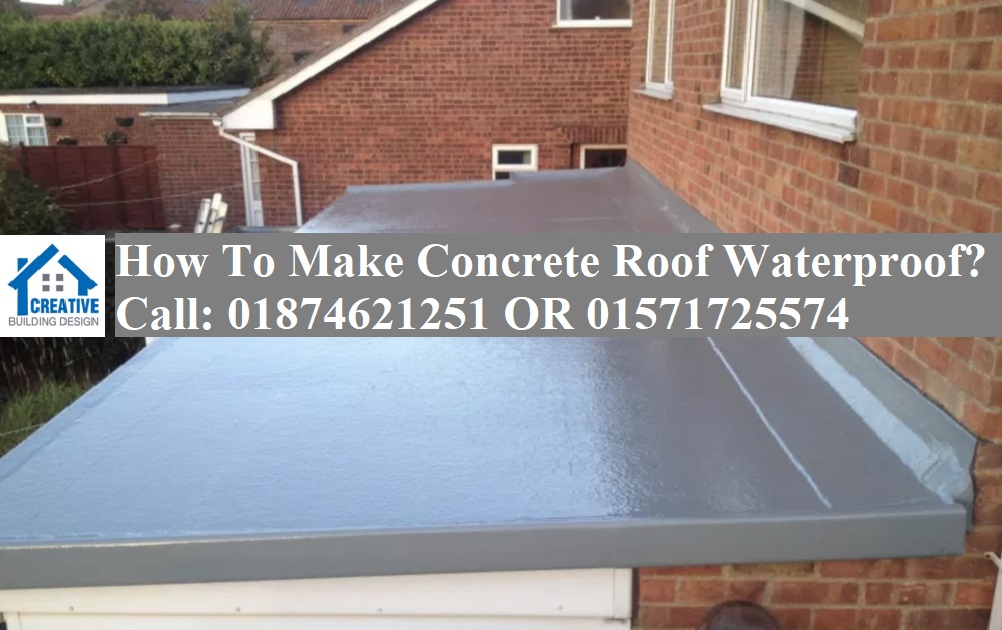
One of the most important steps in waterproofing a concrete roof is to make sure that the roof is properly sloped. Without a proper slope, water can pool on the roof and eventually seep through any cracks or openings.
Another key element in waterproofing a concrete roof is to properly seal all cracks and openings. This can be done with a variety of sealants, such as silicone or urethane. It’s important to apply the sealant evenly and to follow all manufacturer’s instructions.
One final step in waterproofing a concrete roof is to install a drain system. This will allow any water that does pool on the roof to drain away, instead of sitting and eventually seeping through cracks or openings.
Contents
How to make concrete roof waterproof?
A concrete roof is a popular choice for many homeowners because of its durability and fire-resistant properties. However, concrete is a porous material, which means it can absorb water. This can lead to problems like mold and mildew growth, as well as leaks.
There are several ways to make a concrete roof waterproof. One option is to apply a waterproofing sealer to the surface of the roof. This will create a barrier that will prevent water from seeping into the concrete.
Another option is to install a drainage system on the roof. This will allow water to drain away from the concrete, preventing it from becoming saturated. If you have an existing concrete roof, you can also retrofit it with a waterproofing system. This can be done by installing a membrane over the roof or by injecting a waterproofing material into the concrete. Whatever method you choose, it’s important to make sure that the roof is properly ventilated. This will allow any moisture that does get into the roof to escape, preventing it from causing damage.
Can you seal concrete to make it waterproof?
If you have ever wondered if you can make your concrete waterproof, the answer is yes! There are several ways to seal concrete to make it waterproof. The best method depends on the type of concrete you have, the location of the concrete, and the amount of waterproofing you need.
One way to waterproof concrete is to use a waterproofing sealer. This is a clear liquid that is applied to the surface of the concrete. It penetrates the pores of the concrete and forms a barrier that prevents water from getting in. Waterproofing sealers can be applied to both interior and exterior concrete surfaces.
Another way to waterproof concrete is to use a waterproofing membrane. This is a thin layer of material that is applied to the surface of the concrete. It forms a barrier that prevents water from getting in, but it also allows the concrete to breathe. Waterproofing membranes are typically used on exterior concrete surfaces.
The best way to waterproof concrete is to use a combination of both a waterproofing sealer and a waterproofing membrane. This will provide the most complete protection against water intrusion.
How do you make concrete more waterproof?
Concrete is a popular building material because it is strong and affordable. However, one downside of concrete is that it is not naturally waterproof. This means that if concrete is not properly treated, it can absorb water and become damaged over time.
There are several ways to make concrete more waterproof. One option is to apply a waterproofing sealer to the surface of the concrete. This will create a barrier that will prevent water from seeping into the concrete. Another option is to mix a waterproofing agent into the concrete before it is poured. This will help to repel water and keep the concrete from absorbing it.
No matter which method you choose, it is important to make sure that the concrete is properly sealed and protected from water. By taking these steps, you can help to ensure that your concrete lasts for many years to come.
Is it worth it to waterproof a concrete roof?
If you have a concrete roof, you may be wondering if it’s worth it to waterproof it. The answer is yes! Waterproofing your concrete roof will extend its life and protect your home from water damage.
Waterproofing your roof will help to prevent water from seeping into your home, which can cause mold and mildew to grow. It will also protect your roof from the elements, such as wind and rain.
Concrete is a porous material, so it is important to seal it in order to prevent water from seeping in. There are many different types of sealants available, so you will need to choose one that is right for your roof.
Once you have applied the sealant, you will need to re-seal it every few years to ensure that it remains effective. This is a relatively easy and inexpensive process, so it is definitely worth it to waterproof your concrete roof.
Which is the best membrane for roof slab waterproofing?
There are many factors to consider when choosing the best membrane for roof slab waterproofing. The most important factor is the climate. If the climate is hot and humid, then a membrane that is resistant to mold and mildew is a must. Another important factor is the amount of sunlight that the membrane will be exposed to. If the membrane will be exposed to a lot of sunlight, then a UV resistant membrane is a must. Other factors to consider include the thickness of the membrane, the type of adhesive used, and the price.
Final words:
There are a few different ways to make a concrete roof waterproof. One is to use a waterproofing membrane, which is a thin layer of material that is applied to the surface of the concrete. This type of membrane is typically made of rubber or plastic, and it can be applied either before or after the concrete has been poured.
Another way to waterproof a concrete roof is to use a sealant. This type of product is applied to the surface of the concrete and works by creating a barrier that prevents water from penetrating the concrete. Sealants are available in both water-based and solvent-based formulas, and they can be applied either before or after the concrete has been poured.
Finally, another way to make a concrete roof waterproof is to use a penetrating sealer. This type of sealer penetrates into the pores of the concrete and forms a waterproof barrier. Penetrating sealers can be applied to both new and old concrete, and they are available in both water-based and solvent-based formulas.
Related Post:
- Best Waterproofing & Damp Proofing Company
- Waterproofing And Dampproofing Specialist In Bangladesh
- Acrylic Roof Coating Waterproofing
- Bituminous Membrane in Bangladesh
- Cementitious waterproofing in Bangladesh
- Concrete Waterproofing Company in Bangladesh
- Foundation Waterproofing Membrane In Bangladesh
- How To Waterproof Basement Concrete Floor?
- How To Waterproof Concrete Wall?
- Is Concrete Paint Waterproof?
- Polyurea Spray Coating
- Polyurethane Waterproofing In Bangladesh
- Rooftop Waterproofing In Bangladesh
- Waterproofing Chemical in Bangladesh
- Best Waterproofing Applications for Your Flat Roof
- Waterproofing In Bangladesh
- Waterproofing Membrane In Bangladesh
